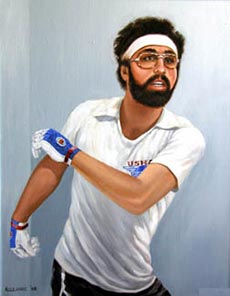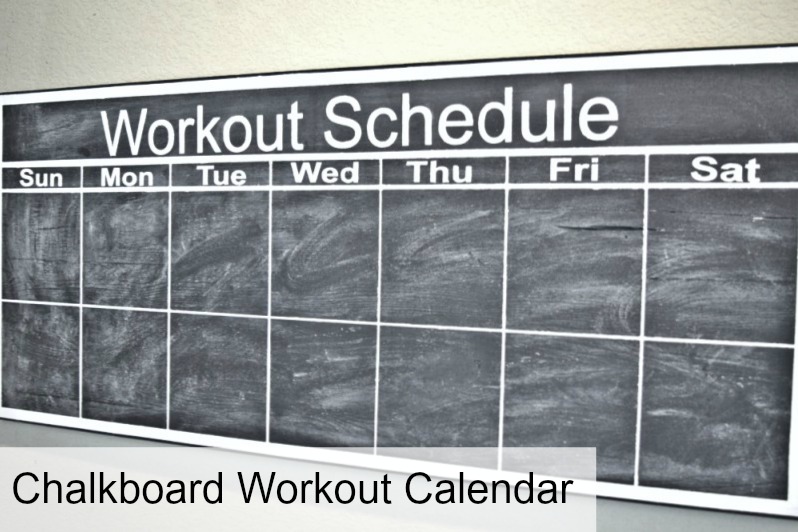By Boak Ferris
You should own the Fred Lewis shot from the beginners’/novices’ article. I have found that intermediate clients have never mastered the Fred Lewis bounce-pass as defined in the beginners’ drills. Once you acquire it, you will now want to add and differentiate pass shots. Toward those ends you will need to improve the following skills.
4) When you drill, you must drill offense; and you must drill defense—separately. What that means is a) “I will drill shots to hit only when I am serving”; and b) “I will next drill shots to hit only when I have received serve.” Moreover, and this is tough to remember when you are on a court by yourself, whenever you drill, any specific shot, visualize where you opponent likely is, while drilling a)offensive shots and b) defensive shots, even if you have to conjure a specific person/competitor in this visualization.
5) For an offensive-shot drill, develop a rally-ender and name it, (“My Finisher”) to hit only when you served. You own it only when you can kill or roll it out or pass it 9 out of 10 times from anywhere in the court with your dominant hand. The easiest finisher to guarantee is the backwall setup, already moving in the direction you want to hit the ball. Master your finisher by tossing the ball to the front and sidewalls and backwall and then by executing a 1-2-3 on the move. Add finishers, as you choose. These are your scoring shots to hit ONLY when you serve, to make long matches and tourneys over many days manageable.
6) For both offense and defense, drill the V-pass always by visualizing your opponent on the court. Only hit the V-pass if you can see the opponent during your shot. The V-pass is best hit right on the wall closest to (adjacent to) your opponent’s standing position, and heads to the backwall without leaving a backwall setup: so it is a speed-controlled shot. In live competition, if you cannot see your opponent when you wrongly attempt a V-pass, you have likely lost the rally, by yielding this shot, since a good opponent has more court perspective and domain than you, and can predict and field your attempted V-passes to a difficult spot, while you are blind. (You will think, “I just hit a good V-pass, so why am I now scrambling?”)
Note that a good three-wall shot can be a type of V-pass, also, intended for hitting the third wall, the sidewall, adjacent to where your opponent stands, without leaving a backwall setup. Master V-passes with both hands. To troubleshoot the V-pass, note that players who use a sidearm finish often overhit this shot, and the ball ends up caroming too high off the sidewall. Thus, to correct, note that you can aim your V-passes closer to the center of the front wall, than your intuition tells you, since the sidearm finish “pulls the ball” while imparting a spin that corkscrews the ball up for its first bounce. Contrariwise, a V-pass hit with a pendulum finish, as described in the beginners’ article, allows you to direct a V-pass by aiming more toward the sidewall, while also imparting more topspin that keeps the ball down, and makes a retrieve harder for the opponent to get. This technical observation about the different spins caused by the different arm finishes also applies to the trajectory of the Fred Lewis bounce-passes.
7) Similarly, for both offense and defense, drill the Fred Lewis bounce-pass always by visualizing your opponent on the court. Hit the Fred Lewis pass ONLY when you cannot see the opponent during your shot. Remember, while drilling V- and Fred Lewis passes, to practice visualizing the scenarios when you can both see or NOT see the opponent during your shot. When in doubt about which side to direct the Fred Lewis pass, remember the adage, “Hit to the opponent’s ‘off-hand” side—unless you yourself are close to a side wall, in which case, the Fred Lewis shot is always same side up same side. With the up-the-line choice, if you miscalculate, your body is in a good position to get a fair replay.
8) Also, you will need to develop a second type of Fred Lewis bounce-pass as a cross-court bounce-pass, too. Once you have mastered the up-the-line Fred Lewis passes, you will want to mix in cross-court bounce passes that bounce next to the far-side wall, and scoot up toward the backwall without leaving the dreaded backwall setup. Master the cross-court Fred Lewis pass with both hands. Both types of Fred Lewis passes benefit you by sending an opponent, who can’t perfectly judge where the ball will strike the floor, back up along the sidewalls to retrieve, while you recover center court.
9) Develop a defensive punch shot that you can use to neutralize a server. The best drill involves having a service partner who hits low aces, but these are hard to recruit, so you can try the following. Stand near the sidewall, either side, and with the hand on that side, loft the ball underhanded to the front wall, low enough that the second bounce of the ball arrives to the service line near that same-side sidewall. Now, bend your back leg, and drive your bending front leg and front foot down next to that low ball, and with a pendulum backswing, bowl your same-side fist under the ball so that the ball backspins off your first knuckles up to the ceiling along the same side, and caroms steeply down along the same sidewall toward the backwall. You must, as best you can, straighten your legs and rise through the punch. That leg work adds consistency, and gets the ball to the roof, while helping you not over-punch the ball, as your rise does some of the speed control.
Visualize the ball trajectory you intend, to achieve consistency. This is true in any sport, and with any shot. The ball contacts your first knuckles at center of the base of the palm. The feel of this shot is a combined medium-force punch with a forearm push, pushing the third knuckles up toward the ceiling target, while rising “beneath” the ball with your legs. If you use all arm and punch, and hit it too hard, it’s a backwall setup. If your knuckles hurt, well, so did your hands at one point, and you will get used to it as your mind and body adjust.
*Important note and disclaimer: do not try anything herein without first seeking the necessary advice of your physicians and coaches who may need to certify you to try any included biomechanics or lifestyle choices.
*Coach Boak’s “Intermediate Competitor’s Drills” are the second of three installments of handball drills for Beginner, Intermediate and Advanced players
Boak’s HANDBALL DRILLS AND TWEAKS for NOVICES AND BEGINNERS HERE













